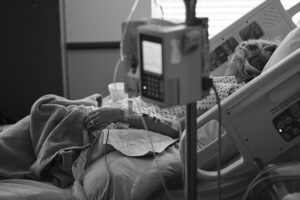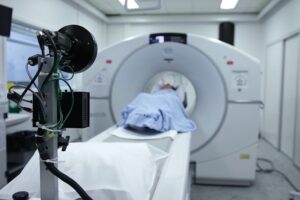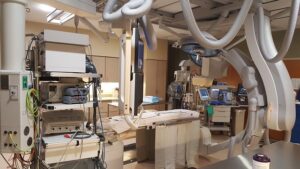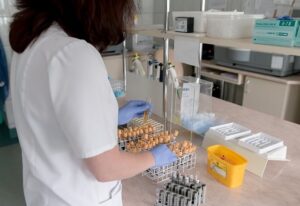Living with ARDS: A Guide for Patients and Caregivers
Living with ARDS: A Guide for Patients and Caregivers
Acute Respiratory Distress Syndrome (ARDS) can feel overwhelming for both patients and caregivers. The unpredictable nature of this illness can create emotional and physical challenges that test not just the resilience of those affected, but also their support systems. In this comprehensive guide, we aim to provide a resource for understanding ARDS, what it entails, the challenges faced by patients and caregivers, and strategies to navigate the journey toward recovery. Our goal is to equip you with knowledge, offering not just information but comfort and strategies for coping as well.
Understanding ARDS
ARDS is a serious lung condition characterized by widespread inflammation in the lungs. It can occur in anyone, often as a result of direct or indirect injury to the lungs. This leads to decreased oxygen exchange, making it difficult for the body to acquire the oxygen it needs. ARDS can develop rapidly, often in conjunction with other conditions such as sepsis, pneumonia, or severe trauma. When the lungs struggle to provide oxygen, this can have dire consequences for each vital organ in the body.
Medically, ARDS is defined by three key criteria: acute onset (usually occurring within a week of a major insult), bilateral opacities (seen on chest imaging), and a decrease in arterial oxygen levels. These factors can be alarming, especially upon diagnosis. It is important to recognize that while the prognosis can be serious, many individuals survive ARDS, especially with prompt medical intervention.
- Acute onset is typically defined as occurring within one week of a known injury.
- Bilateral opacities can be detected through a chest X-ray or CT scan.
- Management focuses on improving oxygenation and supporting the patient’s respiratory function.
Recognizing Symptoms
Symptoms of ARDS can be acute and severe, manifesting as a combination of the following:
- Severe shortness of breath
- Feeling of suffocation or inability to catch one’s breath
- Rapid and shallow breathing
- Persistent cough that may produce mucus
- Blue-tinted skin or lips (cyanosis)
It is crucial for caregivers to monitor these symptoms vigilantly. The onset can escalate quickly, and intervention is often necessary. If you or someone you are caring for exhibits any of these signs, swift medical assistance is required.
The Emotional Impact of ARDS
Living with ARDS can evoke a spectrum of emotions, ranging from fear to frustration. For patients, the struggle to breathe is not just a physical challenge; it may also lead to feelings of isolation, anxiety, and depression. Caregivers may grapple with their own emotional burdens—exhaustion, helplessness, and the stress of ensuring that their loved one receives the best possible care.
Open communication can be an effective tool for coping with the emotional toll of ARDS. Encouraging patients to express their feelings, fears, and hopes can foster a sense of normalcy. Caregivers should also seek support, whether through peer groups, therapy, or online forums. Many organizations provide resources for both patients and caregivers to navigate the complex emotional landscape associated with ARDS.
- Encourage open dialogue to express feelings.
- Establish a routine for both patients and caregivers to promote stability.
- Seek professional support or counseling when necessary.
The Role of Healthcare Providers
Healthcare providers are central to the management and treatment of ARDS. Understanding the medical team’s role and what to expect can empower patients and caregivers. Treatment plans often include mechanical ventilation to support breathing, fluid management, and medications such as steroids to reduce inflammation.
It is critical to ask healthcare providers questions when something seems unclear. Patients have the right to understand their treatment plan, expected side effects, and prognosis. Discussing all aspects of care helps foster a collaborative relationship between patients, caregivers, and the medical team.
- Ask questions about medications and their side effects.
- Request information about the expected course of treatment.
- Understand the roles different healthcare team members play, such as respiratory therapists and nutritionists.
Management Strategies
Effective management of ARDS often necessitates a multifaceted approach. Utilizing a combination of medical treatments and lifestyle adjustments can improve outcomes. Key strategies may include:
- Oxygen Therapy: Supplemental oxygen can enhance oxygenation levels, provided through various devices.
- Physical Therapy: Respiratory therapists may implement breathing techniques and exercises to strengthen lung function.
- Nutrition: A well-balanced diet can help support recovery; a dietitian can provide tailored nutritional plans.
In addition, pursuing rehabilitation options once patients are stable can facilitate a smoother transition back to normal activities. Engaging in pulmonary rehabilitation programs can significantly benefit long-term health by improving exercise capacity and overall well-being. Incorporating gentle physical activity can help maintain strength and endurance, contributing further to recovery.
Daily Living Adjustments
Making adjustments at home can greatly enhance the quality of life for both the patient and caregiver. Modifications can help improve comfort, safety, and independence:
- Home Modifications: Consider installing grab bars in bathrooms, ensuring clear pathways, and minimizing clutter to prevent accidents.
- Assistive Devices: Utilizing devices such as portable oxygen tanks or nebulizers can facilitate easier breathing during daily tasks.
- Creating a Restful Environment: Maintain a calm atmosphere by controlling noise and light levels, which can lessen anxiety.
Tailoring the living environment can encourage independence for the patient while easing the burden on caregivers. These small changes can contribute significantly to the overall quality of life, making day-to-day tasks more manageable.
Nutritional Considerations
Nutrition plays a vital role in recovery from ARDS. A well-balanced diet can support lung health and overall recovery. Protein is essential for healing, while vitamins and minerals can bolster the immune system and combat inflammation.
It is advisable to consult a nutritionist specializing in pulmonary care to create a meal plan suited to individual needs. Staying hydrated is also critical; thus, it’s important to drink plenty of fluids, unless otherwise directed by a physician.
- Focus on high-protein, nutrient-dense foods like lean meats, beans, and legumes.
- Incorporate plenty of fruits and vegetables to ensure a diverse intake of vitamins.
- Consider the use of protein supplements if dietary intake is insufficient.
Activity Levels and Exercise
Encouraging movement is essential, but it is equally important to allow for rest. The “listen to your body” mantra is crucial for those recovering from ARDS. Initially, patients may find they tire quickly and should start with simple activities, progressing to more strenuous exercises as they feel more comfortable.
Physical therapy can be highly beneficial, often focusing on breathing exercises, strength training, and aerobic conditioning. Caregivers can assist by joining exercise sessions or offering encouragement; this can strengthen the caregiver-patient relationship.
- Start with short, manageable physical activities, increasing duration as tolerated.
- Engage in breathing exercises to enhance lung capacity.
- Consider low-impact activities such as walking or cycling for improved cardiovascular health.
Resilience and Emotional Support
Building resilience is vital in the face of adversity such as ARDS. Both patients and caregivers can benefit from engaging in mindfulness practices, exercise, and supportive relationships. Finding ways to celebrate small victories—such as improved lung function or the ability to walk unassisted—can uplift spirits and maintain motivation.
Counseling or support groups can provide a sense of community. Sharing experiences and learning from others in similar situations can foster connections that will support emotional well-being. Remember, acknowledging one’s emotional state is part of the healing journey.
- Establish a support system that includes family, friends, and healthcare providers.
- Participate in local or online support groups to share experiences and learn from others.
- Practice self-care, allowing time for relaxation and rejuvenation.
Frequently Asked Questions (FAQs)
What causes ARDS?
ARDS can result from various conditions, including pneumonia, sepsis, trauma, and inhalation of harmful substances. Understanding the triggers can aid in prevention and treatment.
How is ARDS diagnosed?
Diagnosis usually involves a physical examination, a review of medical history, and imaging tests such as chest X-rays or CT scans to identify lung inflammation and assess oxygen levels.
What is the long-term outlook for ARDS survivors?
While many patients recover, some may experience long-term effects, including respiratory issues and decreased physical capacity. Ongoing medical follow-up and rehabilitation are often beneficial.
Can ARDS be prevented?
While not all cases are preventable, reducing risk factors such as smoking and managing health conditions like diabetes can help decrease the likelihood of developing ARDS.
Conclusion
Living with ARDS is undeniably challenging, but both patients and caregivers possess the strength to navigate this journey together. Knowledge and support are crucial in alleviating the feelings of fear and uncertainty that often accompany a diagnosis of ARDS. By understanding the condition, seeking appropriate resources, and fostering a nurturing environment, patients can improve their chances of recovery while caregivers can find solace in the shared experiences of others.
As you navigate the complexities of ARDS, please know that you are not alone. There are communities, professionals, and resources available to provide support at every stage of the journey towards healing and recovery.
For additional resources and information, you may find the following online articles helpful:
About ARDS and Post-ARDS
ARDS (Acute Respiratory Distress Syndrome) is a life-threatening condition typically treated in an Intensive Care Unit (ICU). While ARDS itself is addressed during the ICU stay, recovery doesn’t end with discharge; patients then embark on a journey of healing from the effects of having had ARDS.
Disclaimer
The information provided in ARDS Alliance articles is for general informational and educational purposes only and is not a substitute for professional medical advice, diagnosis, or treatment. While we strive to present accurate, current information, the field of Acute Respiratory Distress Syndrome (ARDS) and related healthcare practices evolve rapidly, and ARDS Alliance makes no guarantee regarding the completeness, reliability, or suitability of the content.
Always seek the advice of qualified healthcare professionals with any questions you may have regarding a medical condition. Never disregard professional medical advice or delay seeking it because of information you read in ARDS Alliance articles. ARDS Alliance, its authors, contributors, and partners are not liable for any decision made or action taken based on the information provided in these articles.
About ARDS Alliance
Our mission is to improve the quality of life for ALL those affected by ARDS.
The ARDS Alliance is a non-profit committed to raising awareness and enhancing the understanding of Acute Respiratory Distress Syndrome (ARDS), a severe lung condition often occurring in critically ill patients. Through developing alliances, it unites various organizations and experts striving to improve care and support research aimed at finding more effective treatments. Their efforts include educating the public and healthcare providers about ARDS symptoms, risk factors, and advancements in treatment, ensuring better patient outcomes and resource availability.

I believe that raising awareness about Acute Respiratory Distress Syndrome is crucial in improving patient outcomes. Our organization works tirelessly to educate the public about the signs and symptoms of ARDS, and provide support to those affected by this life-threatening condition. Together, we can make a difference in the fight against ARDS.
~ Paula Blonski
President, ARDS Alliance






